The Feud: The Hatfields and McCoys: The True Story Read online
Begin Reading
Table of Contents
Photos
Newsletters
Copyright Page
In accordance with the U.S. Copyright Act of 1976, the scanning, uploading, and electronic sharing of any part of this book without the permission of the publisher constitute unlawful piracy and theft of the author’s intellectual property. If you would like to use material from the book (other than for review purposes), prior written permission must be obtained by contacting the publisher at [email protected]. Thank you for your support of the author’s rights.
For my parents, Bill and Betsey,
and
For my niece Liza
September 27, 1984–October 8, 2012
All different things brought it on.
—Andrew Chafin,
Devil Anse Hatfield’s nephew
and messenger
The human varmint is the most coorious an’ cunningist varmint thar is.
—Devil Anse Hatfield
Mountains make fighting men. No matter where in the world you go, you’ll find that’s true.
—Ralph Stanley
AUTHOR’S NOTE
In 1865, as our nation began to recover from its cataclysmic civil war and to forge a more perfect union, there were yet the inevitable aftershocks. The conflict not only reunited the thirty-six states (two had been added since the start of the war), but also launched a new era of economic growth, urbanization, and industrialization, one that would sweep the land, like the railroads, from coast to coast. But not all Americans were equally prepared to rise on the tide of modernity.
In an isolated pocket of the southern Appalachian Mountains, two Old World families, suspended in geographic convolutions as ancient as time, in ridges and hollows that seemed to stop clocks (and where today cell phones and GPS devices are of little use), continued the bloodshed over matters of passion and honor.
Before the war, Hatfields (of English blood) and McCoys (of Scots-Irish roots) lived on both sides of the Tug River, which separates West Virginia and Kentucky, in relative harmony, intermarrying and working and trading together. After the war, a West Virginia faction of the Hatfield family and a Kentucky branch of the McCoy family found themselves at each other’s throats. Their hostilities would stretch over the course of three decades—from 1865 to 1890.
The fighting grew so bitter and became such a threat to public safety that it almost brought the two Civil War border states back to war. In 1889, the governors of West Virginia and Kentucky carried the dispute all the way to the Supreme Court of the United States. The resulting decision paved the way for one man to go to the gallows and sparked a bounty hunters’ war in the Tug Valley. America was riveted by the violence, which headlined newspapers nationwide. At the height of the feud, a chagrined New York City journalist, T. C. Crawford, declared after visiting the Tug Valley: “I have been away in Murderland.”
In an age of feuds, the Hatfields and McCoys’ was neither the longest nor the bloodiest, yet it captured our national imagination, etched itself in our psyche, and became a defining moment in the American experience, a reflection of something essential in our fierce, liberty-loving character. “Fighting like Hatfields and McCoys” became a catchphrase. Over the decades, the story of these two families and their vendetta has drawn us back again and again, as newspapers, magazines, books, movies, and, most recently, a blockbuster miniseries in 2012 spun the history—murky even as it unfolded—into legend, into myth.
HAVING FAMILY ROOTS IN WEST VIRGINIA, I knew the story all too well—or thought I did. When in the summer of 2008 my brother-in-law Morgan Entrekin, the publisher of Grove/Atlantic Press, suggested that I take a second look at the feud and consider a new retelling of it, I was skeptical at first. Interestingly, it was John F. Kennedy Jr. who had brought the idea to Morgan; before Kennedy’s tragic death, in 1999, they were planning a publishing partnership between Kennedy’s magazine, George, and Grove/Atlantic. Kennedy, from one of America’s iconic families, was fascinated by the iconic Hatfield-McCoy feud and by the fact that there were still pockets of the eastern United States outside governmental control so late in the nineteenth century. At a time when he was seeking more historical narrative for George, Kennedy felt this story in which local politics and states’ rights were determined over the barrel of a Winchester was a natural.
As I read about the feud, I began to realize that the story was far more complex—at once more brutal and more heartrending—than I knew. The true story and what it says about humanity had been lost for me, like for most, in the legend. As I investigated, I became convinced of two things: that the tale of the troubles between these two isolated American families had much to tell us about who we are as Americans and that the story needed to be rebuilt from the ground up using records, original documents, and early accounts whenever available, while corroborating as much of the story as possible on-site in the West Virginia and Kentucky border country where it happened.
OVER THE YEARS, I found, the telling of the feud story caused almost as many arguments as the feud itself. Some accounts ignored elements of the story that clashed with myth; others narrated it from afar, scratching the surface but going no deeper. Such reluctance is understandable. The McCoys and Hatfields have their own differing versions of every feud clash.
After I embarked on the research, I discovered that many truths of the feud lay hidden away, languishing like forgotten keepsakes in a dusty attic, and thus our interpretation of this vital episode of American history was incomplete and often askew. For instance, I found an unpublished novel about the feud by a local judge who personally witnessed a feud event and faithfully recorded original court documents, but it had been stowed in a trunk in a barn for seventy years. The account of a secret murder witnessed by a boy who served as a feud messenger surfaced in a home recording that had sat for decades without being transcribed. A misplaced confession turned up in the wrong folder in a museum. And the forgotten journal of a niece of one of the feud principals—Devil Anse Hatfield—emerged from a farmhouse near the Tug River.
Until now, pages and pages of firsthand reporting had been lost in newspaper archives. One account described the never-before-revealed (and since forgotten) details of Devil Anse’s distilling operation. Another, by James Creelman, one of the most influential newspaper correspondents of the day, went undiscovered by previous historians because it carried no byline.
These contemporary journalists knew that in order to best tell this story there would be no substitute for getting to know the Tug Valley and the Hatfields and McCoys in person. The same is true today. On my first trip, in the summer of 2009, with the help of two forest rangers and my daughter Hazel, I bushwhacked down to the mouth of Thacker Creek on the Tug Fork of the Big Sandy River to see the place where Jeff McCoy had been shot and killed in 1886. We had not been there fifteen minutes when some locals let it be known in feud-worthy fashion that they did not appreciate my snooping around. As gunshots sprayed the river surface near us—making me, as far as I know, the second chronicler of the feud (Creelman being the first, in 1888) to be warned off with rifle fire while researching the story—we beat a hasty retreat up the riverbank.
I returned in the fall, this time with a Hatfield guide, Scotty May, who lives on Mate Creek and whose Chafin clan intermarried with the Hatfields. Now things went much more smoothly, and I was soon riding up on the ridges with a slew of Hatfields—armed with chain saws, pistols in hip holsters, and jars of corn liquor—to the family hideouts. Family members took me to hidden cemeteries and produced journals, deeds, and other documents, all the while imploring me to correct
the record on this point or that one.
Likewise, when I visited with the McCoys, they welcomed my research, providing me with interviews, tours of feud sites, and rare family photographs. Betty Howard, a genealogist who lives in Pikeville, Kentucky, and is related to the McCoys and others involved in the feud, including the lawman “Bad” Frank Phillips, was as generous with her voluminous research on the feud as she was unbridled in her pro-McCoy beliefs.
Using such resources, documents, and past accounts, I have attempted in these pages to correct the record, to deflate the legends, to check the biases, and to add or restore accurate historical detail. Like every feud historian, I have occasionally had to rely on oral tradition, one that is often contradictory since many versions of each event have surfaced over time and since quite a few of those directly involved kept silent or told lies because warrants for their arrests stayed on the books for decades.
Of the fatalities in the feud, three McCoys (two women and a boy) were said to have died of a broken heart. While this malady dates back to biblical times—insults caused King David to suffer from a broken heart, and Shakespeare’s feudist Lady Montague died of it (“Grief of my son’s exile hath stopp’d her breath,” says her husband)—it is only recently that science has attempted with some success to quantify and explain such a phenomenon. It appears that emotional distress, if not broken-heart syndrome, did play a role in these deaths (and they are thus marked among the “killed” in the charts that help you keep track in this book).
Parts of the feud remain shrouded in mystery and probably always will. Still, this powerful true saga of love, lust, greed, and rage that ensnared three generations of two families on what was then an isolated and relatively lawless American mountain frontier is graphic enough. Its lessons are about what happens when society’s safeguards are absent or fall apart, when men—armed as they please—are left to their own devices to enforce “justice,” and when family ties determine right and wrong and tribalism prevails. Our self-reliant, wilderness-dwelling forebears often had to grapple with a foe more potent and more relentless than external enemies: their own demons.
—Dean King
Prologue
The Fate of Cotton Top Mounts
February 18, 1890
It was February, a time when the locals usually hunkered down in smoky cabins on the brink of stir-craziness, quietly riding out the long, brutal months of an Appalachian winter, subsisting on cured razorback pork and venison, stored in smokehouses in hollowed-out tree trunks they called meat logs, and on cornmeal and bear grease. But this year, a quarter century after the end of the war that had scarred them all deeper than they even knew and deposited a black feud in their midst, like a miasma trapped in the hills, the bloodthirst in their veins had worked on them like spring, thawing their deep inner reserve, bringing forth in their minds words that needed to be uttered and images that needed to be seen. And so they came, in droves, in some cases, entire families, as if it were Election Day or a revival, to satisfy their inescapable urge to behold a man hang by his neck.
Not that the cold would have stopped them. These mountain people, of British descent mostly, were inured to it. They left their cabins lightly chinked to let air circulate and even in winter closed their doors only at night. They rarely wore coats—if they had them—and routinely did chores barefoot in the snow. The men often waded in icy rivers while fishing and logging and, on bear hunts, slept on the ground without blankets.1
On this day, they emerged on foot from the hollows, where their cornfields lay at such an incline that one visiting newspaper reporter said their places “looked like farms stood on their edges.” Many traveled on trails, breathing again hope in the crisp air of the Cumberland Plateau, where the hills were covered in magnificent trees, descended from the great swath of first-growth wilderness. Here oaks bulged to twenty feet around, and tulip poplars soared two hundred feet in the sky. Lean and long-legged, these mountain people were accomplished walkers, used to covering distances with burdens that city dwellers could hardly imagine. They thought nothing of shouldering a two-bushel sack of corn, weighing 112 pounds, for a ten-mile trip to a mill and then turning back again with the milled corn the next day, or covering twenty miles in a night to hunt a bear, only to return home for breakfast and chores.2
Others set out for the hanging on mules or horses. Some drove carts pulled by oxen on roads that were nothing more than ruts across rock and packed soil. Still others boated the Levisa Fork of the Big Sandy, up- or downriver to the bend where the Pike County seat, Pikeville, a town of nearly five hundred souls, stood watch. Pikeville was without benefit of either train tracks or telegraph wires, less a town than a sort of fortress in the wilderness, a place for a hanging.
They came to see the curse of the hostilities vanquished. They came to bury the bad name. They came to bear witness to justice meted out the old-fashioned way, in the light of day, official and tangible. There were those in the throng who knew that for the Big Sandy Valley, this hanging was also the down payment on railroad tracks, jobs, and, for some, riches. Out would go timber. Coal would be king.
IT HAD BEEN TWO YEARS since a New York City newspaperman had come down and written a story about the feud, dubbing the valley Murderland for the entire world to read. Now news of the looming execution of Devil Anse Hatfield’s half-witted, bastard, albino nephew Cotton Top Mounts had spread through the bleak winter hills around the tributaries of the Big Sandy with the snap and crack of wildfire.3
Strictly speaking, the execution was not to be public, as public executions had been banned in Pike County for four decades. But the fence being erected around the gallows on the edge of town was a sham. Since the scaffold had been built in a notch on a small hillside, the fence would not block the view for spectators sitting on the hill, nor was it meant to. As eager as anyone to alter the fortunes of their region, local officials had bucked the spirit of the law, if not the letter, for something altogether bigger: the greater good of the people. They welcomed a public spectacle to spread the message—that feuding and wanton killing would no longer be tolerated—in the most graphic and profound way.
Everyone was curious: Would a member of the Hatfield gang really swing? And was it true that Cap Hatfield, Cotton Top’s cousin, or his uncle Wall who was rumored to have seven wives and fifty-five children, had bribed him to confess with the promise of a new saddle? Would one more death mean the end of three decades of killing? Would the stain, the blight on their community, finally be removed? Or would Devil Anse ride again, this time to save Cotton Top and, in so doing, make certain the further flow of blood?
PIKEVILLE SHERIFF HARMON MAYNARD HAD his hands full. The town had swelled tenfold with a volatile mixture of rough mountain folks, bounty hunters, Union and Confederate army veterans (both regulars and irregulars), moonshiners, swindlers, and journalists, the last coming from as far away as Louisville. Maynard understood the gravity of the situation and was taking no chances. He had sworn in twenty deputy sheriffs to make sure the execution took place. In addition, he had called up a citizens’ guard of more than fifty heavily armed men, whose guns were equipped with bayonets for riot control and close fighting. It was an impressive show for far-flung Pikeville. The town was ready.4
Maynard, a former schoolteacher and first-term sheriff better known as Harm, scoured the streets with beady black eyes that peered out above his woolly brown beard as if from behind a bush. The threat of a Hatfield raid, the impositions of scurrilous reporters, and the demands of state militia officers, judges, and the governor himself—not to mention the keeping of the most high-profile prisoners in the state—had taxed his reserves.
His compact jail in the center of town was considered extremely secure, but Cotton Top was locked up with Charley Gillespie, who had more than a few tricks up his sleeve. When the jail’s sewage system mysteriously backed up, it had looked like the two of them would have to be moved to a less secure part of the jail. Then one of the other inmates suggested that
the sheriff take a good look in the sewer pipe. He did and found that it had been stuffed with pieces of blanket. Gillespie and Cotton Top stayed right where they were.
When the inevitable trouble arrived, it came from an unexpected quarter. Former deputy sheriff Frank Phillips, a killer and cuckolder of Hatfields, and Bud McCoy, the son of the first man killed in the feud, had been drinking all night. As the crowd grew that morning, the two men strutted through the streets. With a loaded revolver in each hand, Phillips, a small, fastidious man with dark hair and fine features who looked younger than his forty-eight years, periodically fired into the air. He aimed to stop the hanging, he shouted, although he never said why; perhaps he did not think it a fitting end to his own death-defying efforts to subdue the violent West Virginia clan. Though remorseless, Cotton Top—whose father was murdered in the feud—was taking a fall for the rest of the Hatfields.
The McCoys themselves claimed that while Mounts was in the Pikeville jail, he admitted that Cap Hatfield had promised him five hundred dollars, a rifle, a saddle, and immunity if he would take the murder charge. Apparently unaware of how little money he would be needing in the near future, Mounts had complained to them that he had received the saddle and the rifle but only a few of the dollars.5
Cotton Top Mounts.
Phillips declared that he had run the Hatfields down, and now he aimed to run Pikeville. Backed by his deputies and carrying the burden and will of his hundred first cousins in the area, not to mention his wife, Arminta, the daughter of a legendary Confederate spy, Sheriff Maynard had other ideas. He and his men stopped the rogue lawman and told him to quit making trouble. Phillips responded that the schoolteacher could try to stop him. Maynard—emboldened by the fact that he already had—threatened to put Phillips in jail. Phillips punched him. Then in a flash he kicked hard to Maynard’s rib cage, snapping four ribs like dry sticks. Maynard drew a pistol and pulled back the hammer. But before he could shoot, his officers jumped on Phillips, took his guns, and began to beat him. Bud McCoy drew his weapon and leveled it just as Phillips’s other friends dove into the fray. They managed to wrestle him, nearly unconscious from the whiskey and the beating, away from the lawmen. Bent in pain, Maynard now rose and summoned more guards. Two dozen men wielding bayoneted rifles gained control of the situation and dispersed the mounting crowd.6

 A Sea of Words
A Sea of Words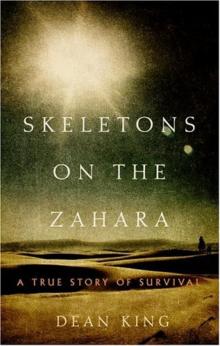 Skeletons on the Zahara
Skeletons on the Zahara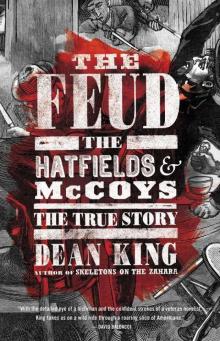 The Feud: The Hatfields and McCoys: The True Story
The Feud: The Hatfields and McCoys: The True Story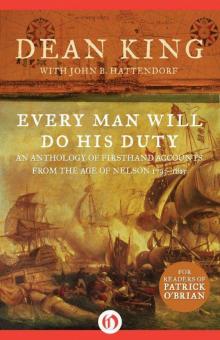 Every Man Will Do His Duty
Every Man Will Do His Duty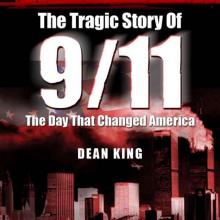 9/11...The Tragic Story of the Day that Changed America: The Terror, The Horror and The Heroes
9/11...The Tragic Story of the Day that Changed America: The Terror, The Horror and The Heroes White Slave Cop
White Slave Cop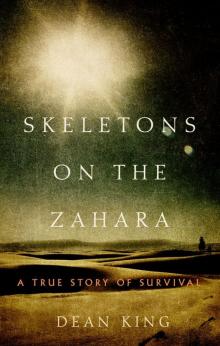 Skeletons on the Zahara: A True Story of Survival
Skeletons on the Zahara: A True Story of Survival